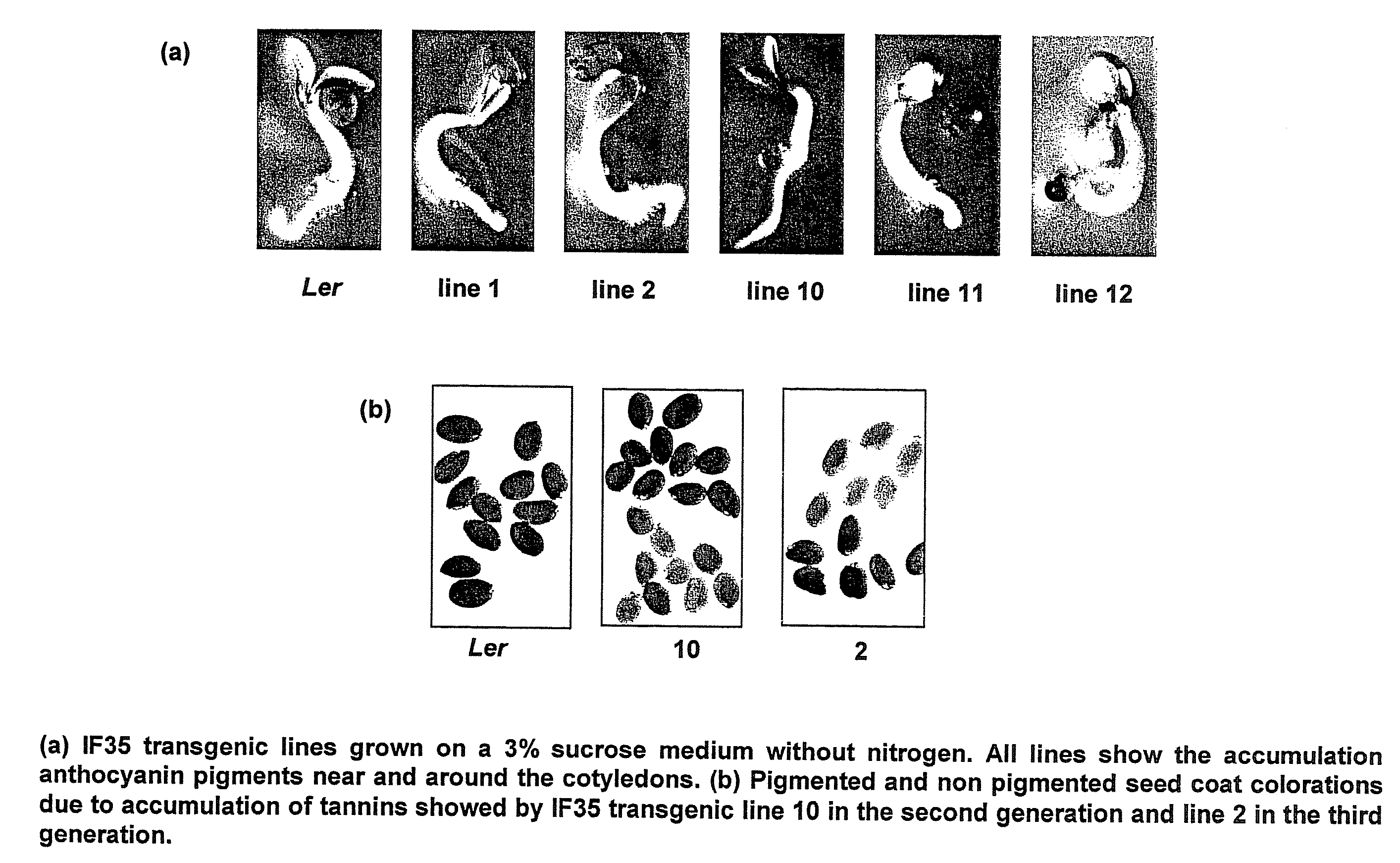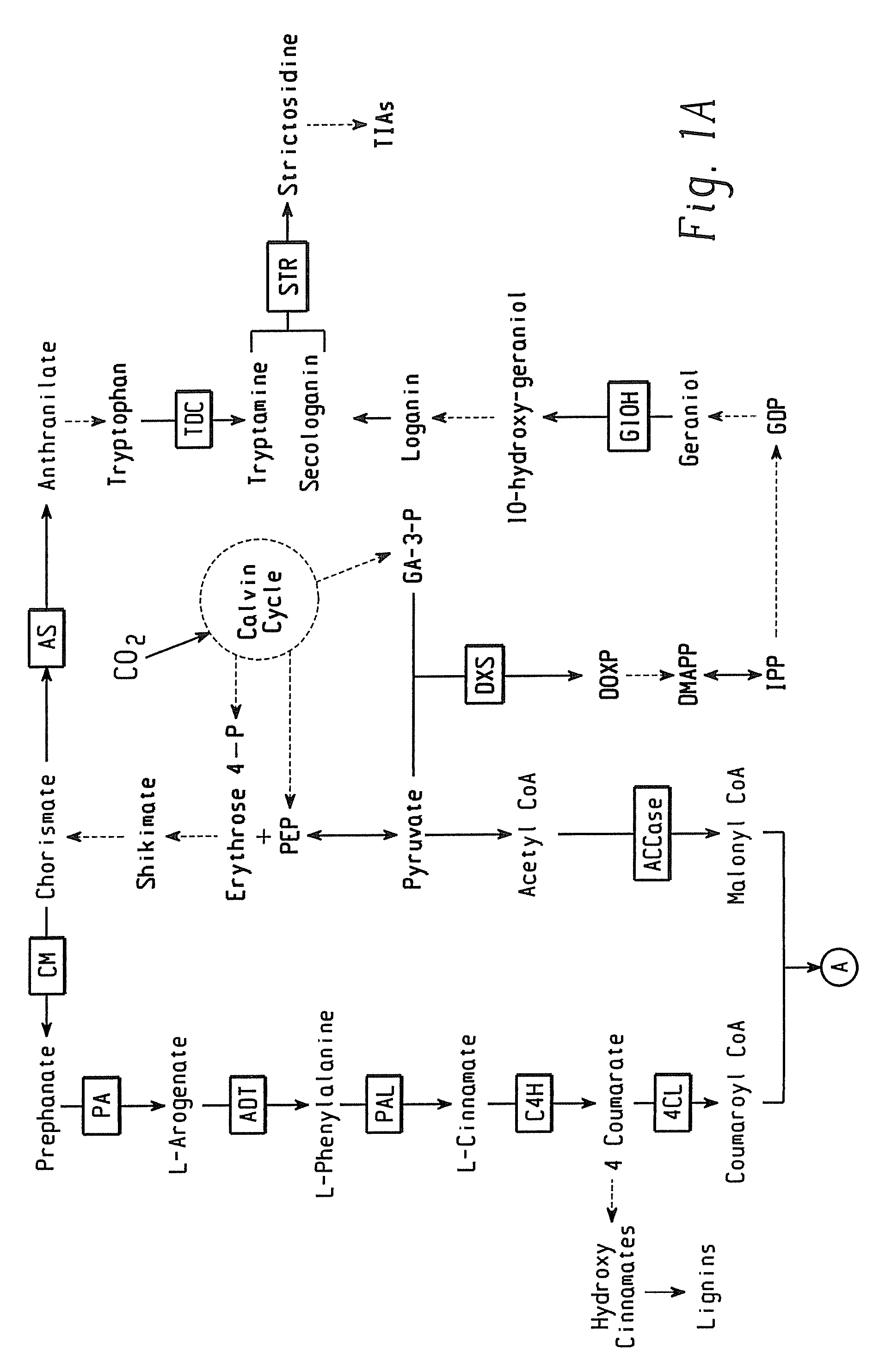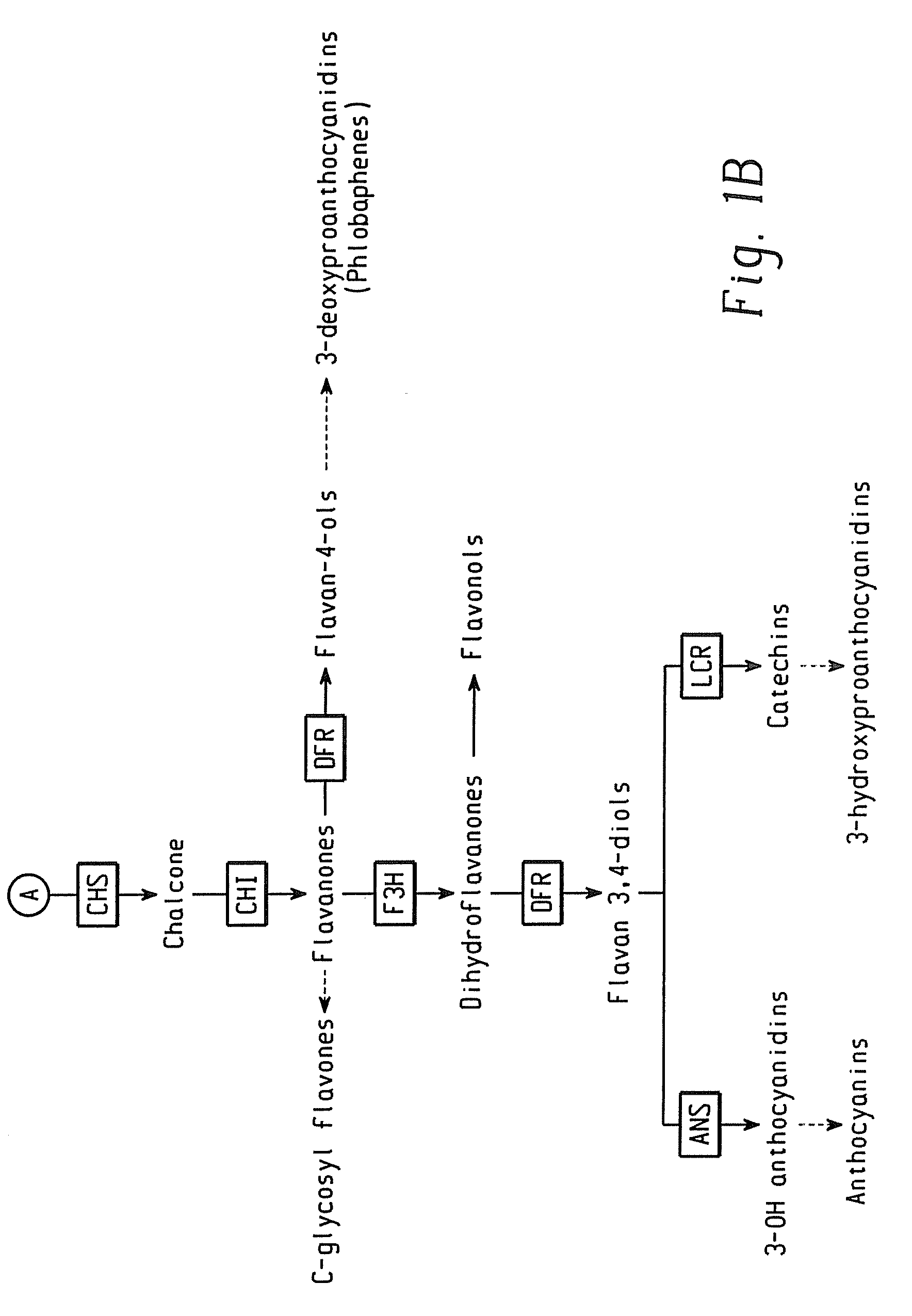Transgenic plants with altered levels of phenolic compounds
a technology of phenolic compounds and plants, applied in the field of single-stranded nucleic acids, can solve the problems of increasing the cost and time required to make high-quality paper, increasing the cost and time of making high-quality paper, and reducing the digestibility of the compounds
- Summary
- Abstract
- Description
- Claims
- Application Information
AI Technical Summary
Benefits of technology
Problems solved by technology
Method used
Image
Examples
example 1
[0058]DNA constructs comprising the CaMV 35S promoter, operably linked to a cDNA encoding a transactivator protein comprising SEQ ID NO. 2, and a herbicide resistance gene were prepared using standard recombinant DNA techniques. All constructs were introduced into Arabidopsis cells via an Agrobacterium vector. Following infection, plants were regenerated from the transformed cells. (See FIG. 6.) As shown in FIG. 7(a) seedlings derived from these transformed cell lines exhibited accumulation of anthocyanin pigments near and around the cotyledons. The second generation plants derived from cell line 10 and the third generation plants derived from line 2 also exhibited colorless seed coats (See FIG. 7(b)), indicating that the expression ov ZmMyb-IF35 is interfering with the accumulation of tannins.
example 2
[0059]DNA constructs comprising the CaMV 35S promoter, operably linked to a cDNA encoding a transactivator protein comprising SEQ ID NO. 2, and a herbicide resistance gene were prepared using standard recombinant DNA techniques. All constructs were introduced into Arabidopsis cells via an Agrobacterium vector. Following infection, plants were regenerated from the transformed cells. (See FIG. 6.) As shown in FIG. 7(a) seedlings derived from these transformed cell lines exhibited accumulation of anthocyanin pigments near and around the cotyledons. The second generation plants derived from cell line 10 and the third generation plants derived from line 2 also exhibited colorless seed coats (See FIG. 7(b)), indicating that the expression of ZmMyb-IF35 is interfering with the accumulation of tannins.
[0060]As shown in FIG. 8, the transformed maize callus cells produced in accordance with this method exhibit green fluorescence on the cell walls, while control lines transfected with a constr...
PUM
| Property | Measurement | Unit |
|---|---|---|
| molecular weight | aaaaa | aaaaa |
| Tm | aaaaa | aaaaa |
| polyribonucleotide structure | aaaaa | aaaaa |
Abstract
Description
Claims
Application Information
 Login to View More
Login to View More - R&D
- Intellectual Property
- Life Sciences
- Materials
- Tech Scout
- Unparalleled Data Quality
- Higher Quality Content
- 60% Fewer Hallucinations
Browse by: Latest US Patents, China's latest patents, Technical Efficacy Thesaurus, Application Domain, Technology Topic, Popular Technical Reports.
© 2025 PatSnap. All rights reserved.Legal|Privacy policy|Modern Slavery Act Transparency Statement|Sitemap|About US| Contact US: help@patsnap.com



